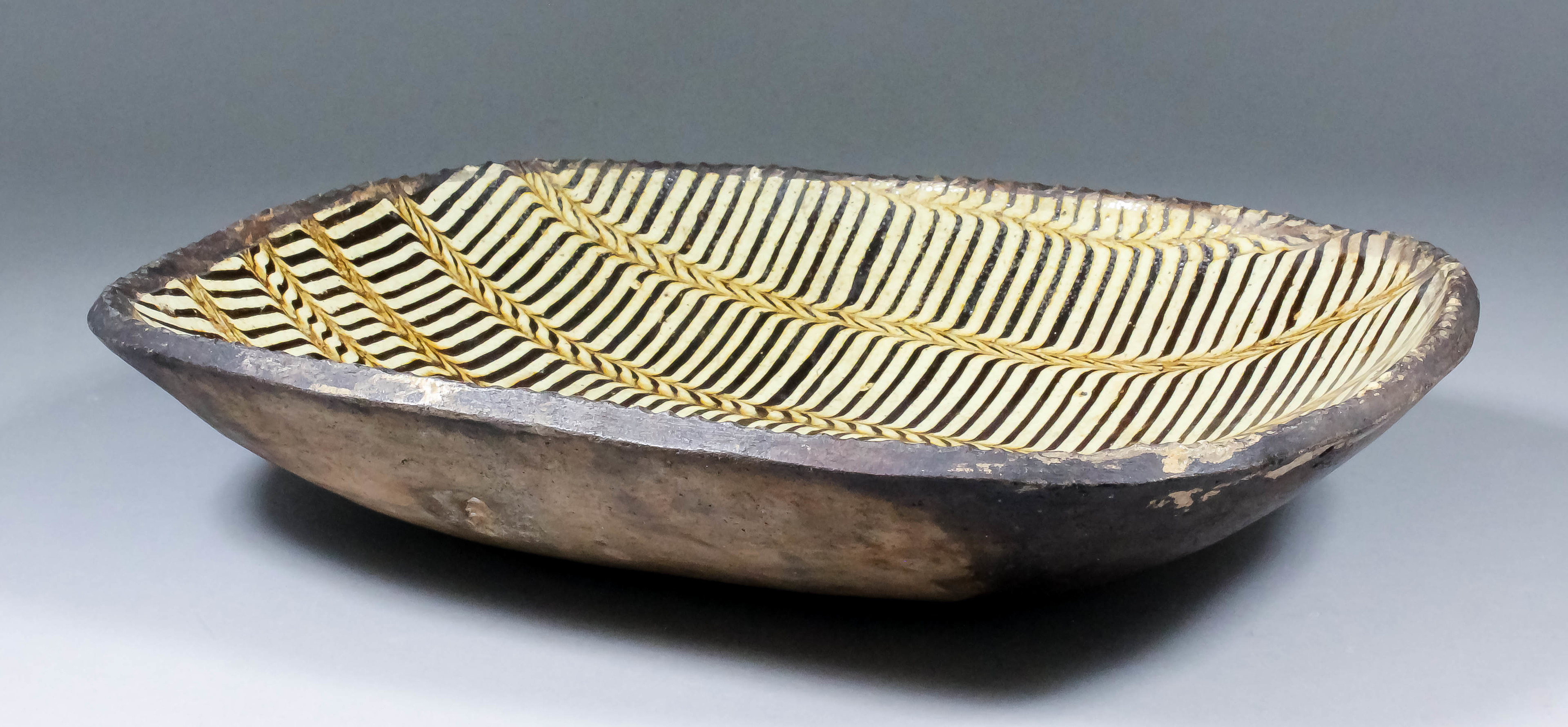SLIPWARE IS not something to be found in the unmentionables department of M&S.
In the antiques world it is earthenware pottery decorated with coloured slip – or liquid clay – and then glazed. Thus it is identified by its primary decorating process, where this semi-liquid slip is placed on to the clay body surface by dipping, painting or splashing before firing.
Many prehistoric and historic cultures used slip as decorating material on earthenware. It is thought to have originated in the Far East, where fragments of red-slipped pottery, about 5000 years old, have been found in Japan. Ancient Greek potters perfected the technique on red and black storage vessels several centuries later, and, from around 200 BC, potters in China were painting their wares with a slip decoration.
In Britain, it was the main decorative technique in the 17th and mid-18th Centuries before the introduction of enamels.
The most notable slipware potter working in 17th Century England was Thomas Toft in the Staffordshire Potteries. Toft is known to have worked between 1660 and 1680 and around 30 of his pieces have survived. The Staffordshire potters depicted human and animal figures, stylised flowers and fluid linear patterns, many of the designs showing a remarkable freedom of expression and imagination.
Yet the technique demanded great dexterity and control, and it was in England that the technique reached a height of skill and excellence that it never attained elsewhere.
Estimated at £950 to £1100 at Canterbury Auction Galleries’ summer antiques sale was a good 18th Century Staffordshire slipware dish of rectangular form with ‘pie crust’ rim. You will see the slip in the finely trailed and combed brown design in today’s illustration.
On a pleasant cream coloured ground, the dish measured about 12in x 15in.
I have seen a similar example of the same dimensions in the stock of John Howard, the eminent English ceramics specialist, where it was described as a loaf making dish. This dish was priced at £6250.
So they are rare things. Even with a hairline crack the Canterbury example was knocked down for a triple estimate £3600.
Picture: Slipware dish, £3600 (Canterbury Auction Galleries).










